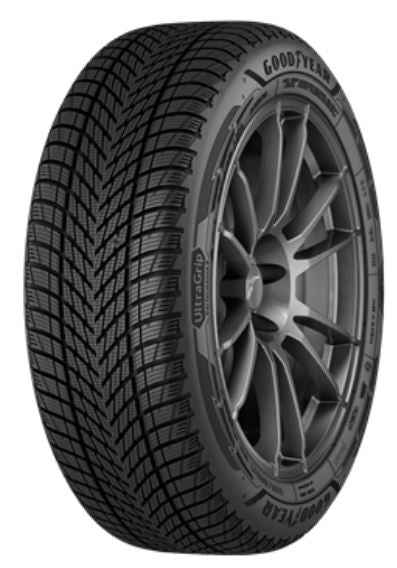📘 Tire Information & Guides
🛞 Guida alle dimensioni dei pneumatici – Come leggere le marcature dei pneumatici
Understanding tire sizes is essential when buying new tires or rims. Every tire has a series of numbers and letters on its sidewall (example: 205/55 R16 91V). Here’s what they mean:
📌 Example: 205/55 R16 91V
205 → Tire Width
- The width of the tread in millimeters.
- Example: 205 mm wide tire.
55 → Aspect Ratio (Profile Height)
- The height of the sidewall, expressed as a percentage of the width.
- Example: 55 = sidewall height is 55% of 205 mm.
R → Construction Type
- R = Radial (the most common construction today).
- Other types (bias or diagonal) are rare in modern cars.
16 → Rim Diameter
- The wheel diameter in inches.
- Example: 16-inch wheel.
91 → Load Index
- A numeric code that indicates the maximum load capacity per tire.
- Example: 91 = supports 615 kg.
V → Speed Rating
- A letter showing the maximum speed capability of the tire.
- Example: V = up to 240 km/h.
🔎 Other Important Markings
- XL / Reinforced → Extra load capacity for heavier vehicles.
- M+S (Mud & Snow) → Certified for use in mud and snow conditions.
- 3PMSF (Three Peak Mountain Snowflake) → Meets EU standards for severe snow use.
- DOT Code → Shows the manufacture date (week + year, e.g., 3522 = 35th week of 2022).
✅ Quick Tips for Choosing the Right Tire Size
- Always check your vehicle registration (libretto di circolazione) for approved tire sizes.
- The load index and speed rating must be equal or higher than the original specification.
- Using the wrong size can affect safety, fuel efficiency, and performance.
- For upgrades (wider or larger rims), ensure compliance with Italian road regulations.
📊 Tabella di conversione dell'indice di carico degli pneumatici
The load index indicates the maximum load (in kilograms) that a single tire can carry.
70 = 335 Kg
71 = 345 Kg
72 = 355 Kg
73 = 365 Kg
74 = 375 Kg
75 = 387 Kg
76 = 400 Kg
77 = 412 Kg
78 = 425 Kg
79 = 437 Kg
80 = 450 Kg
81 = 462 Kg
82 = 475 Kg
83 = 487 Kg
84 = 500 Kg
85 = 515 Kg
86 = 530 Kg
87 = 545 Kg
88 = 560 Kg
89 = 580 Kg
90 = 600 Kg
91 = 615 Kg
92 = 630 Kg
93 = 650 Kg
94 = 670 Kg
95 = 690 Kg
96 = 710 Kg
97 = 730 Kg
98 = 750 Kg
99 = 775 Kg
100 = 800 Kg
🚦 Conversione dell'indice di velocità degli pneumatici
The speed index indicates the maximum speed a tire can safely reach.
- M: up to 130 km/h
- N: up to 140 km/h
- P: up to 150 km/h
- Q: up to 160 km/h
- R: up to 170 km/h
- S: up to 180 km/h
- T: up to 190 km/h
- H: up to 210 km/h
- VR: over 210 km/h
- V: up to 240 km/h
- ZR: over 240 km/h
- W: up to 270 km/h
- Y: up to 300 km/h
🏷️ Altri contrassegni e significati dei pneumatici
Below are some of the most common tire sidewall markings and their explanations:
- M+S → Mud & Snow; tire designed for winter use (not tested under EU severe snow standards).
- 3PMSF → Three Peak Mountain Snowflake; EU-certified for severe snow conditions.
- TL → Tubeless tire (without inner tube).
- DOT → Indicates the date of manufacture.
- XL / Reinforced → Extra load capacity, stronger structure.
- RunFlat / SSR / DSST / EMT → Technology that allows driving with a puncture for limited distance.
- Conti-Seal / Seal-Inside / Self Seal → Self-sealing technology against punctures.
- Acoustic / Conti-Silent / SoundComfort → Noise-reduction technology.
- FP / FR / FSL / RPB → Rim protection edge.
- OBL / OWL / RWL / WL / WSW / WW / WWW → Tire lettering/sidewall colors (white, outlined, black, gold).
- Ply Rating (PR) 4-PR, 6-PR, 8-PR, 10-PR, 12-PR, 14-PR, 16-PR, 18-PR → Indicates the load capacity structure of the tire.
🚗 Marchi OEM (produttore di apparecchiature originali).
Some tires carry special markings for car manufacturers. Examples:
- AO / AO2 → Audi
- MO / MOExtended → Mercedes
- N0, N1, N2, N3, N4, N5, N6 → Porsche
- K1, K2, K3 → Ferrari
- AR / ARR → Alfa Romeo
- BMW / (*) / UZ → BMW specific approvals
- J / JRS / JZ → Jaguar
- R01, R02 → Audi Quattro, RS models
- FO / FO2 → Ford
- VOL → Volvo
- VO / VW → Volkswagen
- PE → Peugeot
- TO → Toyota
- Mazda, Honda, Subaru codes (CZ, DZ, EZ, etc.) → Brand-specific approvals
✅ Quick Notes
- Always respect the load index and speed rating listed in your vehicle’s registration.
- Using incorrect specifications can compromise safety, fuel efficiency, and performance.
- OEM markings are recommended when replacing tires on premium vehicles, to maintain manufacturer standards.
